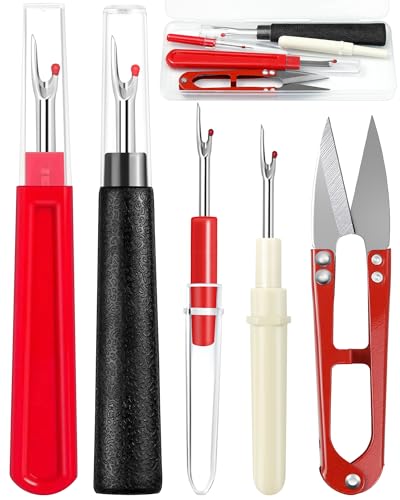Crafting your own t-shirts can be a rewarding experience, especially when you work with jersey fabric. Its soft, stretchy nature makes it perfect for creating comfortable and stylish apparel. Whether you’re a seasoned sewer or just starting out, understanding how to handle jersey fabric can elevate your projects.
With the right techniques and a bit of know-how, you’ll be designing custom tees that fit like a dream. From selecting the right tools to mastering seams and finishes, this guide will walk you through everything you need to know. Get ready to bring your t-shirt ideas to life with ease and confidence.
Understanding Jersey Fabric
Jersey fabric is a popular choice for t-shirts due to its versatility and comfort. Knowing its characteristics helps you create high-quality garments.
Types Of Jersey Fabric
- Single Jersey: Lightweight and stretchy, ideal for casual tees.
- Double Jersey: Thicker and more stable, suitable for structured designs.
- Organic Jersey: Made from organic cotton, eco-friendly option.
- Blended Jersey: Combines cotton with elastane or polyester for enhanced flexibility.
Benefits For T-Shirts
- Softness: Feels comfortable against the skin, enhancing wearability.
- Stretchiness: Provides ease of movement and a flattering fit.
- Breathability: Keeps you cool by allowing air circulation.
- Durability: Resists wear and maintains shape after washing.
- Versatility: Suitable for various styles and designs, from basic to intricate.
Preparing The Fabric
Proper preparation ensures your jersey fabric maintains its shape and quality during the sewing process. Follow these steps to ready your fabric effectively.
Pre-Washing Techniques
Pre-washing reduces shrinkage and removes sizing agents from the fabric. Wash your jersey fabric in cold water with a mild detergent. Use a gentle cycle and avoid fabric softeners, as they can affect the fabric’s stretch. Dry the fabric on a low heat setting or air dry to prevent distortion.
Cutting And Layout Tips
Accurate cutting minimizes waste and ensures precise garment pieces. Lay your jersey fabric on a flat, stable surface, smoothing out any wrinkles. Use sharp scissors or a rotary cutter for clean edges. Align patterns with the fabric’s stretch direction to maintain the t-shirt’s fit. Mark your pattern pieces with fabric chalk, ensuring consistent placement across all sections.
Sewing Techniques
Mastering sewing techniques ensures your t-shirts turn out professional and comfortable.
Choosing The Right Needle
Select a ballpoint needle for jersey fabric to prevent snags and runs. Use sizes 70/10 to 90/14, depending on fabric weight:
- 70/10 for lightweight jersey
- 80/12 for medium-weight
- 90/14 for heavyweight
Seam Finishing Methods
Finish seams to enhance durability and comfort:
- Overlock Stitch: Prevents fraying and creates a clean edge.
- Zigzag Stitch: Secures raw edges and allows fabric to stretch.
- French Seam: Encases raw edges for a smooth finish inside the garment.
- Flat-Felled Seam: Adds strength and a polished look, ideal for high-stress areas.
Using the right needle and seam finishing method elevates the quality of your jersey t-shirts, ensuring they fit well and last longer.
Designing T-Shirts
Creating unique t-shirts starts with thoughtful design choices. Focus on selecting patterns and adding custom details that showcase your style.
Pattern Selection
Choose patterns that complement jersey fabric’s stretch and softness. Opt for designs with simple lines or minimal seams to enhance comfort. Select measurements that ensure a flattering fit, accounting for the fabric’s elasticity. Utilize commercial patterns or draft your own to match your vision precisely.
Adding Custom Details
Incorporate custom elements to personalize your t-shirts. Apply embroidery for intricate designs, ensuring stitches are even and secure. Use screen printing for bold graphics, aligning prints with the fabric’s stretch direction. Add trims like ribbed collars or contrasting sleeves to elevate the overall look. Select details that enhance durability and maintain the garment’s quality.
Care And Maintenance
Washing
- Turn Inside Out: Protect colors by flipping t-shirts inside out before washing.
- Use Cold Water: Wash in cold water at 30°C to minimize shrinkage.
- Select Gentle Cycle: Choose a gentle cycle to preserve fabric integrity.
- Choose Mild Detergent: Opt for a mild detergent to avoid weakening fibers.
- Avoid Fabric Softeners: Fabric softeners reduce breathability and stretch.
Drying
- Air Dry: Dry t-shirts naturally to maintain elasticity.
- Use Low Heat: If tumble drying, set dryer to low heat to prevent damage.
- Remove Promptly: Take shirts out immediately to reduce wrinkles.
Ironing
- Set Low Temperature: Iron on a low setting, around 110°C, to prevent scorching.
- Iron Inside Out: Protect fabric surface by ironing shirts inside out.
Storage
- Fold Neatly: Fold t-shirts to avoid hanger marks and maintain shape.
- Store in Cool, Dry Place: Keep shirts in a cool, dry environment to prevent mildew and fading.
Additional Tips
- Wash with Similar Colors: Prevent color bleeding by washing similar shades together.
- Avoid Bleach: Do not use bleach as it can degrade fabric quality.
- Limit Washing Frequency: Wash only when necessary to extend garment life.
Conclusion
Working with jersey fabric opens up endless possibilities for creating comfortable and stylish t-shirts. You’ll find that with the right techniques and care your custom tees will not only look great but also feel fantastic to wear.

Embrace the versatility of jersey fabric and let your creativity shine. Whether you’re a seasoned sewer or just starting out you’ll enjoy the process of crafting your own unique wardrobe pieces.
Keep experimenting and have fun with your projects. Your perfectly fitted t-shirts are just a few steps away!

















